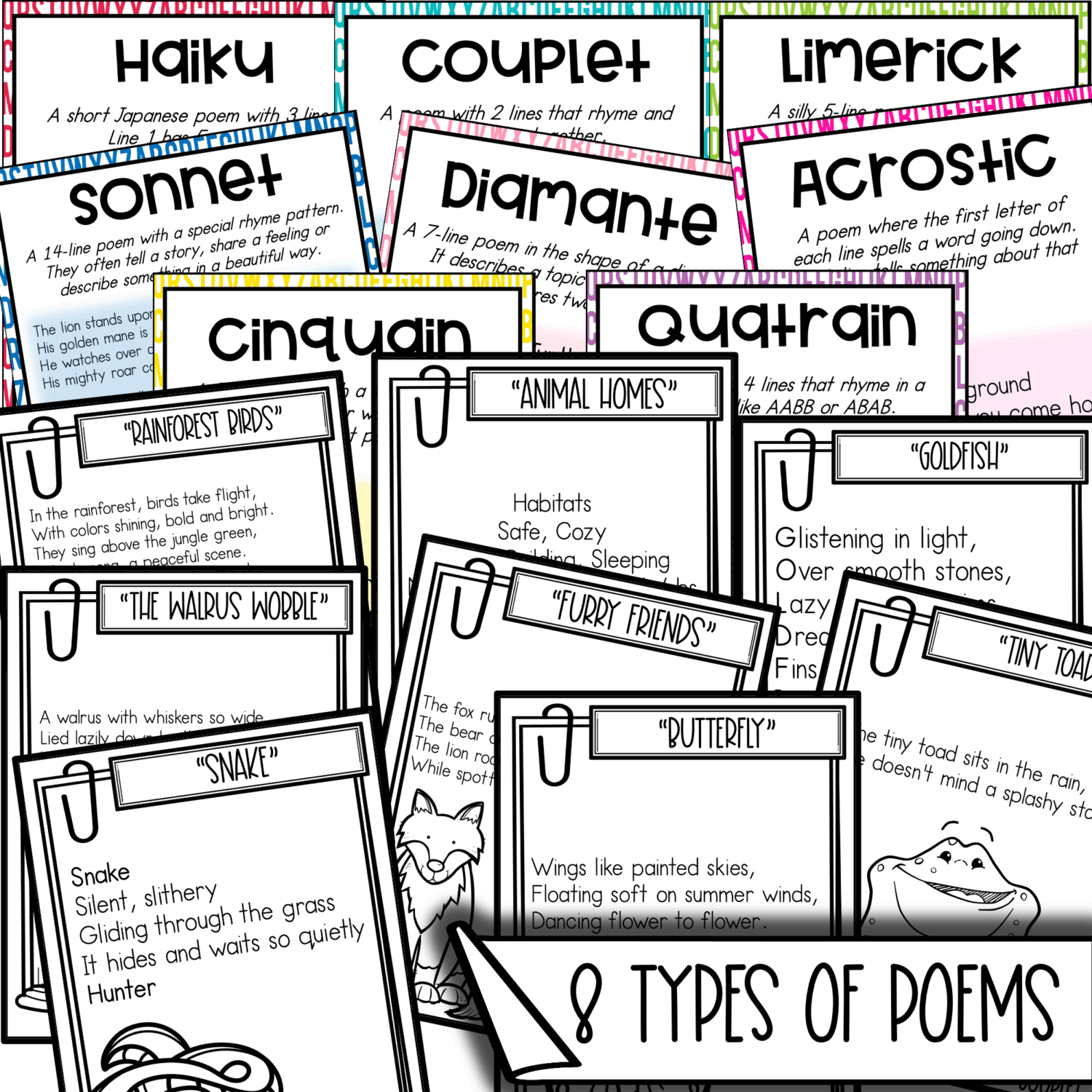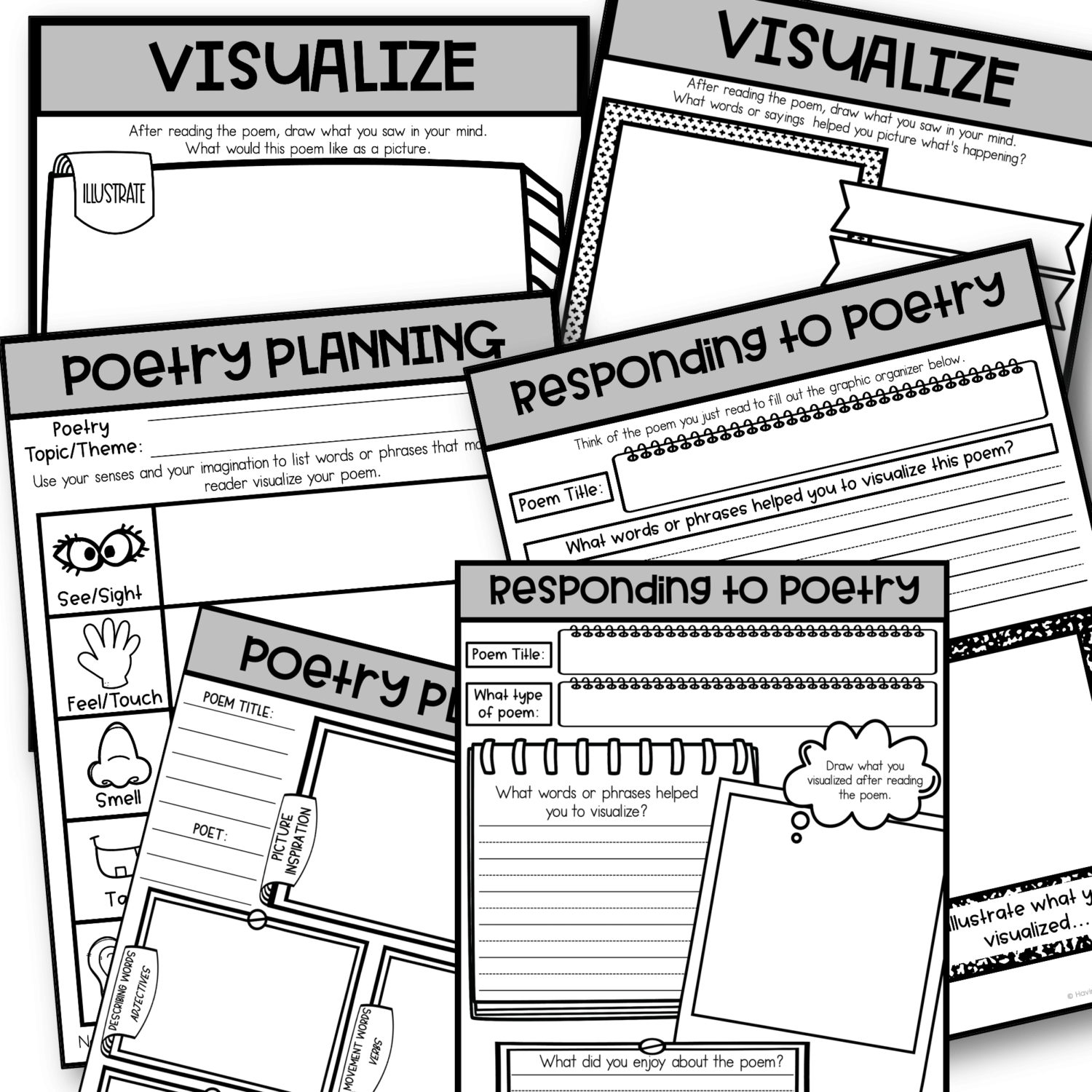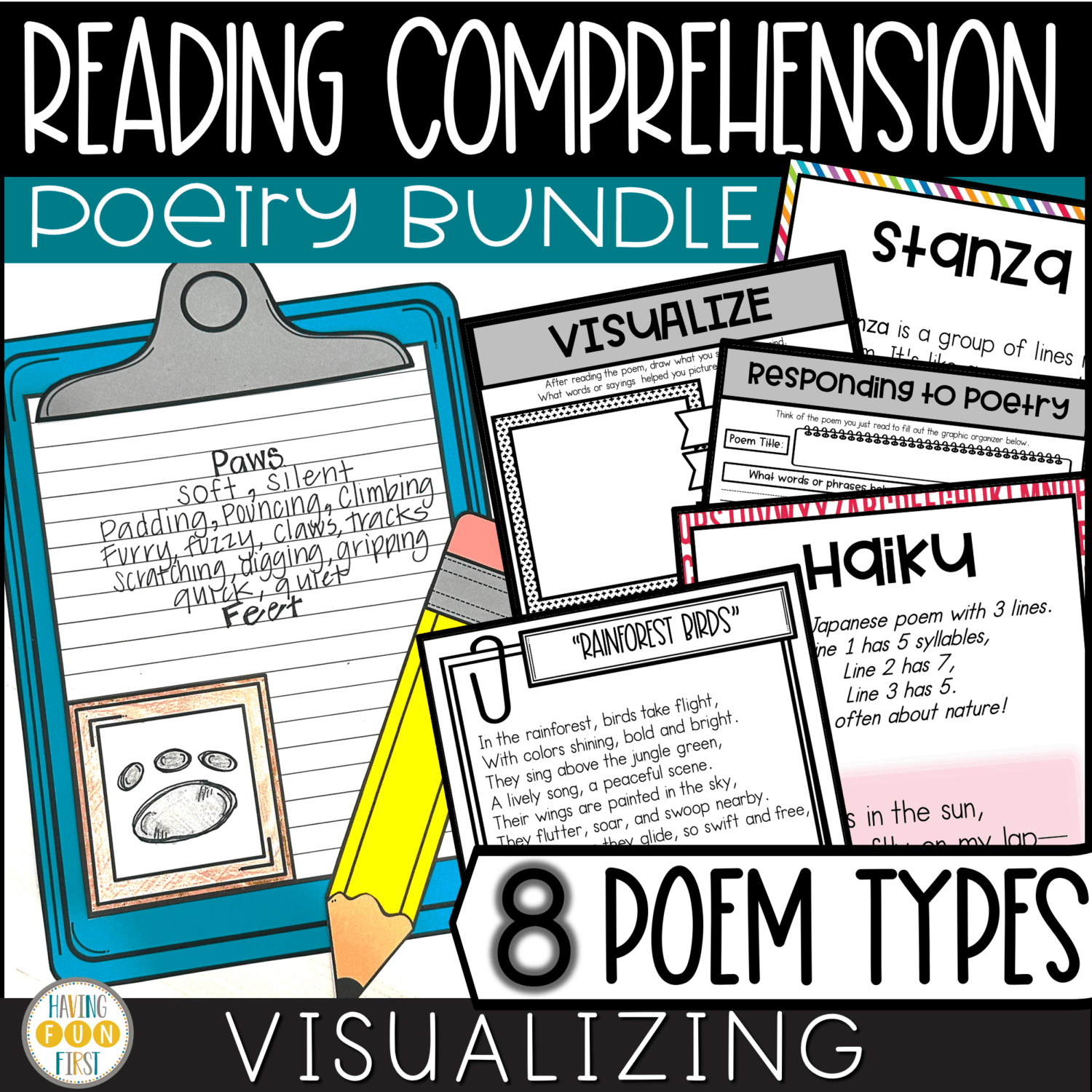Table of Contents
Helping students improve their reading comprehension starts with teaching them to create mental images as they read. One powerful strategy for developing this skill—visualizing while reading—is through poetry. Short, vivid poems can spark imagination and give young readers the perfect opportunity to slow down and truly picture what’s happening in the text.

Why teach visualization in early elementary?
Visualization is all about making mental pictures while reading. It helps kids see the story in their minds (I always say “let’s create a movie in our mind”), using clues from the text, like what something looks like, how it feels, or even how it sounds. For second graders and other elementary students who are becoming more confident and independent readers, this skill is a game-changer.
When kids visualize while reading, they are more likely to:
- Understand what they’re reading
- Remember important details
- Stay focused and engaged
- Build personal connections with the text
Visualizing with Poetry
Poems are full of descriptive language, sensory details (like sights, sounds, smells, textures), emotional tone and voice, and strong imagery in just a few words. Poems are also short and playful, making them less intimidating, so students can slow down, focus, and let their imagination take over. In other words, poetry and visualization were made for each other!
Think about this: a short poem about a slithering snake or a lazy walrus on the shore. Your students read it, close their eyes, and can picture it. Then they might draw it, act it out, or talk about the words that helped them visualize. There are so many ways to experience poetry, which makes it easy to adapt to all styles of learners. That interaction with the text not only builds reading comprehension, it also makes reading memorable and inclusive.
Poetry Unit with Lessons for Visualization
I have created a whole Poetry Unit Bundle for teaching visualization with 24 original poems, lesson ideas, printable vocabulary posters, discussion questions, crafts, and more.



Students will practice:
- Visualizing while reading
- Understanding poetic language and structure
- Identifying poem types and their features
- Writing original poems with creativity and confidence
- Building fluency and vocabulary with engaging texts
There are a variety of ways to use this Poetry Bundle, including literacy centers, independent or small group reading, whole-class poetry lessons, writer’s workshop, and more.

Poetry has a unique way of slowing readers down and helping them connect more deeply with language. When you combine it with visualizing while reading, you’re not just teaching a skill—you’re inviting students to step into the world of the text and experience it for themselves.
For more reading comprehension units and ideas, be sure to check out these blog posts:
- Using Questioning Strategies to Increase Reading Comprehension
- Teaching Nonfiction Text Features – Shark Unit Study
- 5 Reading Comprehension Activities for Context Clues


Leave a Reply